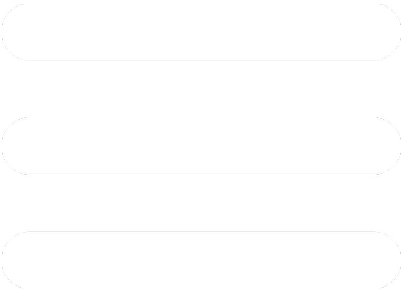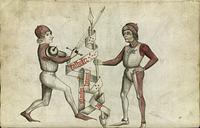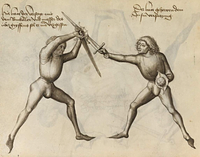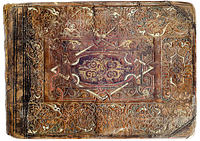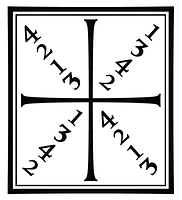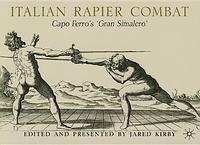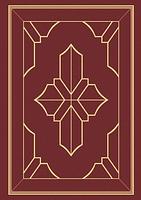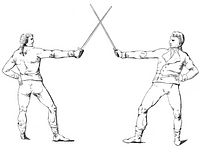Weapons We Wield
.jpg)
About
Bucklers are a small, round shield often held in front of the body while using another weapon in the dominant hand. While there aren't many manuscripts describing the historical usage of bucklers, a few do exist, and the principles of weapon-and-shield combat can be inferred and experimented with through the study of other shield-based systems (such as Bolognese sidesword and rotella).
Source(s):
Discipline(s):
.jpg)
About
Daggers are small, knife-like weapons that greatly vary in shape, size, grip, and handling. Some daggers are even specially designed for parrying other weapons such as rapiers.
Source(s):
.jpg)
About
Federschwerter (also known simply as "feders") are longsword variants that were used in Fechtschulen ("fighting schools") during the German Renaissance era for practise and sparring. They are perhaps the most common type of longsword that you will see in the HEMA world due to the fact that we generally aren't trying to kill one another. They are very similar to longswords but feature a distinctive "Schilt" near the base of the blade.
Source(s):
Discipline(s):

About
Longswords are - as the name suggests - long swords that usually weigh a bit over 1 kilogram. They were used from around the 14th to 16th century. Pictured: two Federschwerts (which are similar to longswords, but with a narrower blade and a Schilt on the base of the blade).
Source(s):
Discipline(s):
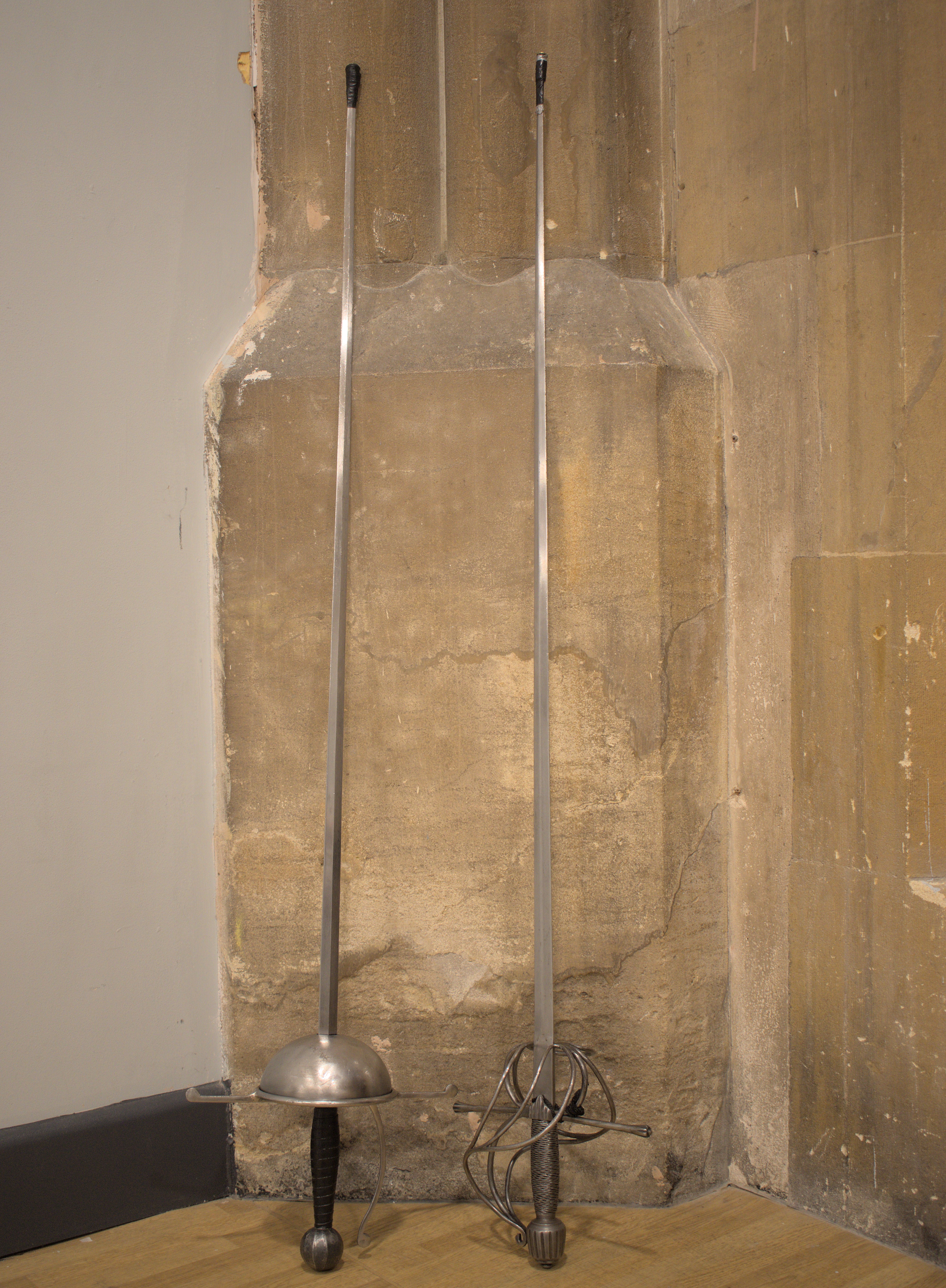
About
Rapiers are one-handed weapons that usually weigh around a kilogram, making them heavier than one might expect! Rapiers come in various shapes and sizes and were commonly used in the Renaissance era until the 17th century, and were even carried around by common citizens! Pictured: a cup-hilted rapier and a complex-hilted rapier.
Source(s):
Discipline(s):
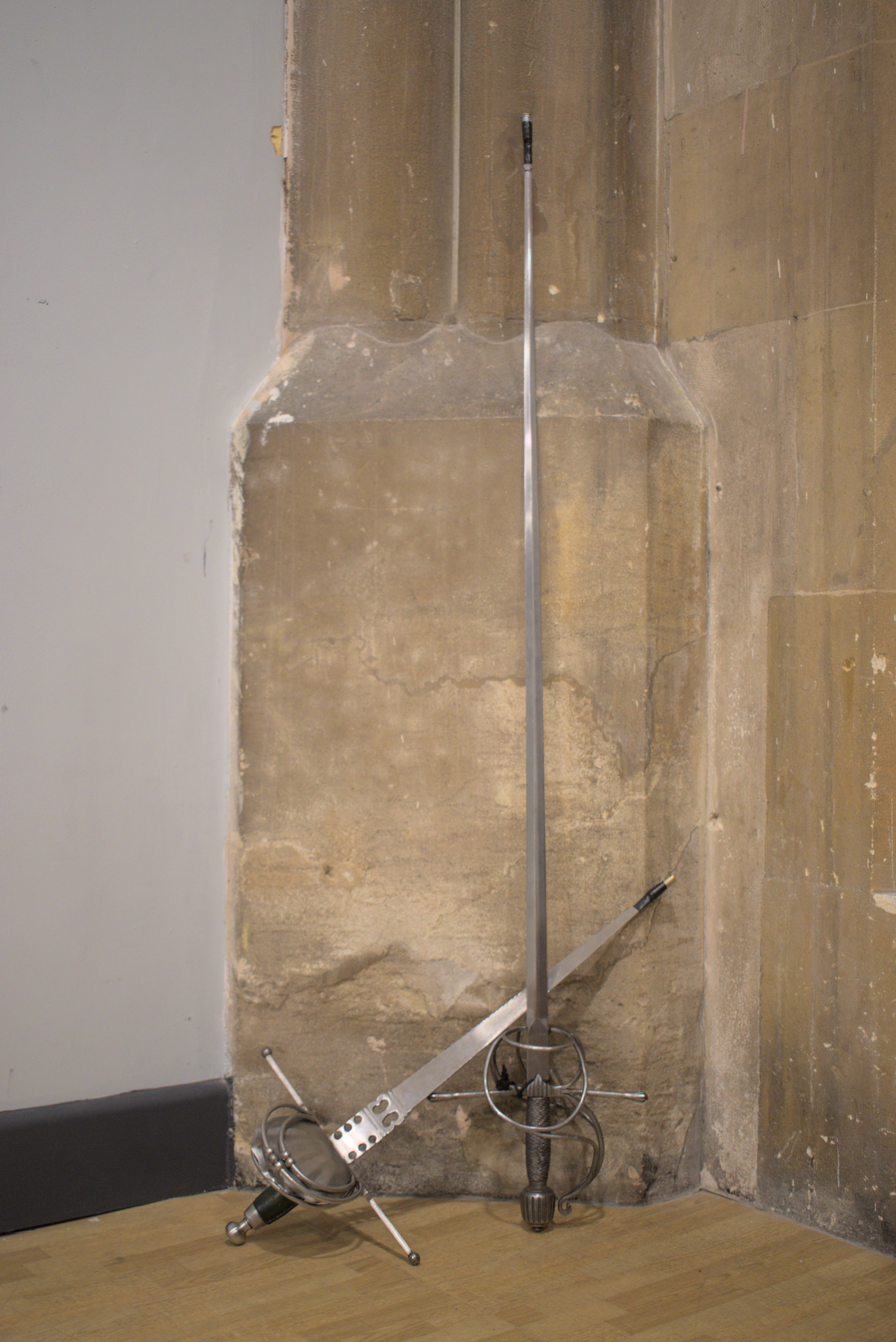
About
As rapiers were one-handed weapons, they were often used in conjunction with a dagger. This dagger was typically used for parrying an opponent's thrusts (as opposed to using the off hand) and for controlling the opponent's rapier during a fight.
About
This is a weapon similar to a sabre, except heavier and with considerably more hand protection in the form of a basket hilt.
Source(s):
Discipline(s):
About
Sabres are a very old type of sword, typically with a curve in the blade and finger or hand protection. They vary in shape, size, and weight.
Source(s):
Discipline(s):
About
A smallsword is - as one might expect - a small sword! It is seen as the evolution of the rapier into a smaller, efficient weapon. It is very light and primarily used for thrusting due to its lack of edge. It later transitioned into the modern foil, as used in Olympic / sport fencing.
Discipline(s):
About
A spadroon is a light sword with a straight-edged blade, enabling both cut and thrust attacks.
